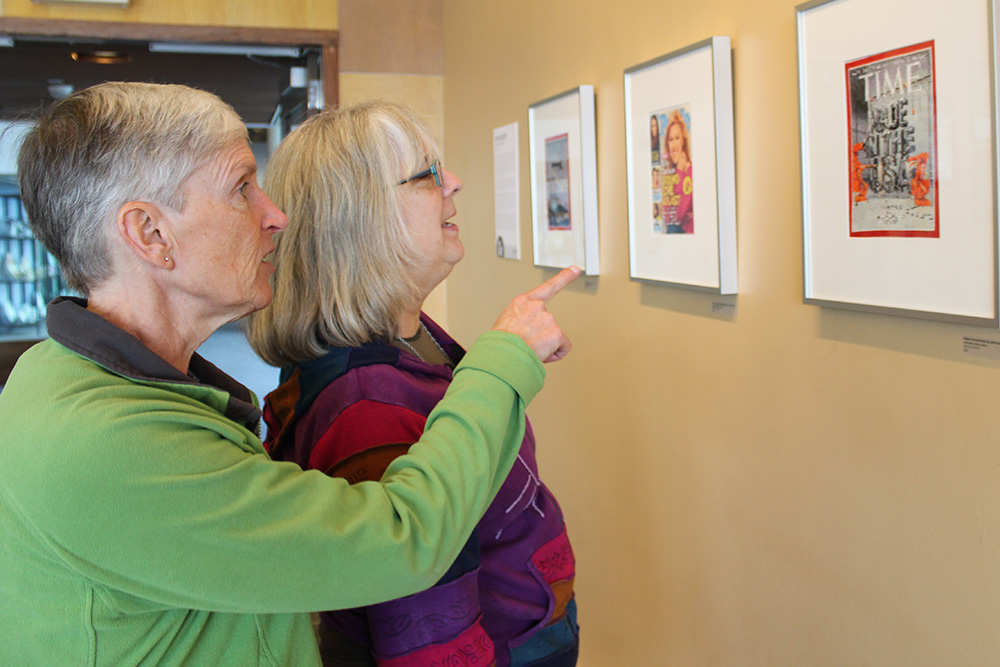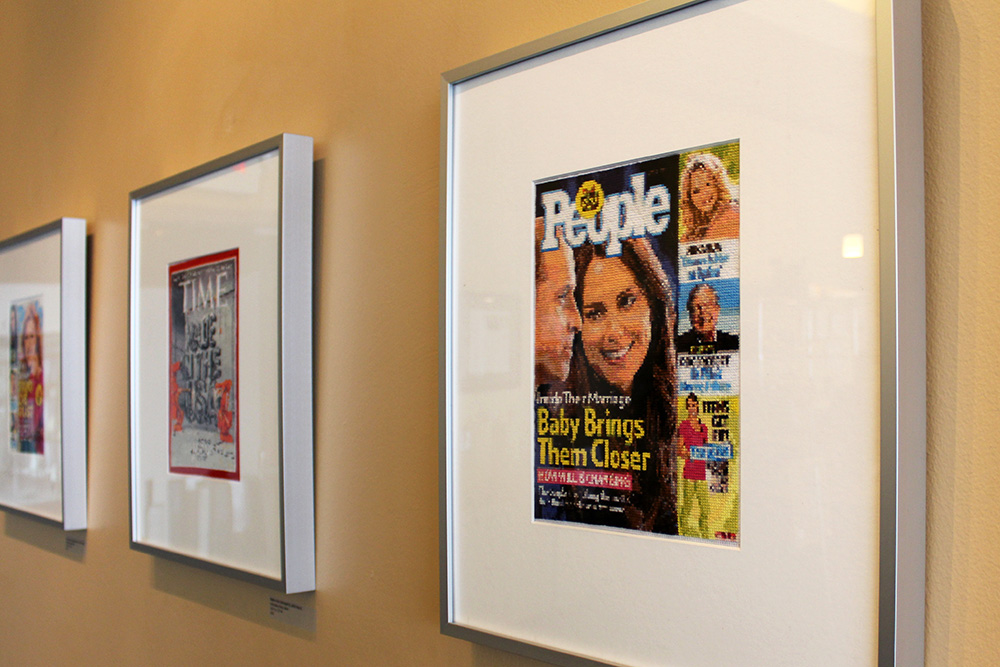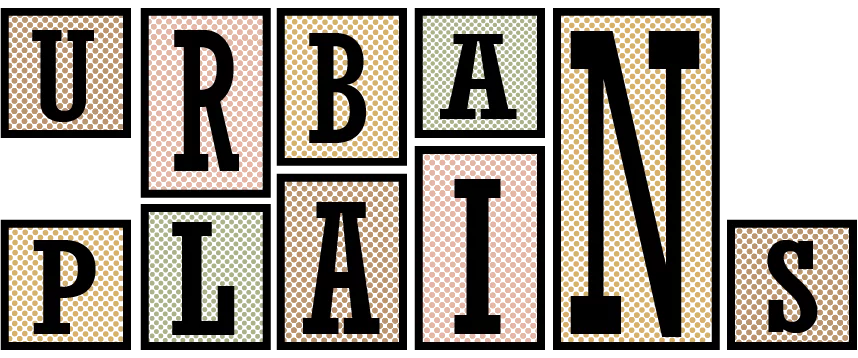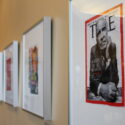Photos by Meg Johnson
The standard shelf life for the weekly magazines Time and People is 168 hours before a new issue takes its place. But Iowa artist Jennifer Drinkwater is reinterpreting the meaning of those hours by threading in a unique twist. Drinkwater dedicated her exhibition, “168 Hours,” to cross-stitching every pixel of several iterations of both magazines. Not only does 168 represent the magazines’ shelf life, but it’s also the name of Drinkwater’s exhibit, and the amount of hours she spends on each piece.
Drinkwater’s “168 Hours” exhibition has been on display in the State Historical Museum of Iowa in downtown Des Moines since February, and will end April 30. However, other projects she’s worked on reached several parts of the country, like Missouri and Texas. The cross-stitch patterns of the “168 Hours” pieces are meant to portray weekly moments captured throughout the nation displayed as popular magazine covers.
The stitch patterns are meant to invoke intrigue and introspection about the state of the nation from week to week. They are juxtaposed to highlight events like First Days Home, published by People in 2013, regarding Prince William and Duchess Kate bringing home their firstborn child, which is displayed alongside The Childfree Life, published by Time the same week, about the freedom of adulthood without children.

Drinkwater’s use of cross-stitch as her artistic medium is no accident. She chose this art style to highlight gender disparity issues, which includes particular art forms seen as having less value than others.
“When we think of art, we don’t think of what it celebrates. We think of it as a transient experience, but really, all artists are a product of their culture.”
“I started questioning not only content, but the form of the art,” Drinkwater says. “We look at painting and we celebrate that as the most traditional.” This realization helped Drinkwater explore other less celebrated artforms.
Drinkwater enjoys crafting and painting, but picked up cross-stitch in 2013. She feels connected to her two grandmothers in this choice of medium. “We think of fiber [as related to] craft, so I started thinking, how do I relate gender to material?” As a professor of anthropology at Iowa State University, Drinkwater began assessing her artwork styles through a social impact lens to encourage viewers to consider gender issues.

Veronica O’Hern, grant services and artist programs manager with the Iowa Arts Council, works closely with Drinkwater to showcase the exhibit at the museum. She aims to highlight how unique venues can play a key role in exploring different ways to engage the community, while also promoting local artists.
“It made me feel like art had the potential to have social impact. It was in the world, not trying to get out of the world.”
O’Hern says her department learned about the “168 Hours” project a few years ago and had hoped to show it last winter, but the total project made up of nine covers wasn’t complete at that time. O’Hern and Drinkwater collaborated on when to get the piece showcased, and through their relationship and familiarity, “168 Hours” was added to Café Baratta’s on the third floor of the museum. The exhibition is on display during the café’s business hours, Monday-Saturday from 11 a.m. until 2 p.m.
“[168 Hours] seemed like a natural fit,” says O’Hern. The exhibition, full of bright colors and interesting styles, creates a fun atmosphere at the café’s entrance.
Michael Morain, communications manager of the Iowa Department of Cultural Affairs, speaks about working art into unique spaces. As an organizer for different projects, Morain says getting art placed outside of a gallery setting is another way to bring it into a community. Coincidentally, in the process of setting up “168 Hours,” Des Moines-based publisher Meredith Corp. was negotiating to buy Time and People as part of a bigger deal.
“The timing was sort of lucky,” Morain notes. “All of a sudden the company that produces Time and People is now based here in Des Moines.” The museum later sent notice off to the magazines that their covers were presented in cross-stitch format locally.
Drinkwater’s message for each project she works on is a bit different, but the goal is still the same: to get people to look carefully. She hopes views will stop, look, and “Pay attention, and then if you’re not happy with what you see, do something,” she says. This message is prevalent in the “168 Hours” exhibit when you stop and look closely at the fine print, or rather, fine thread.

